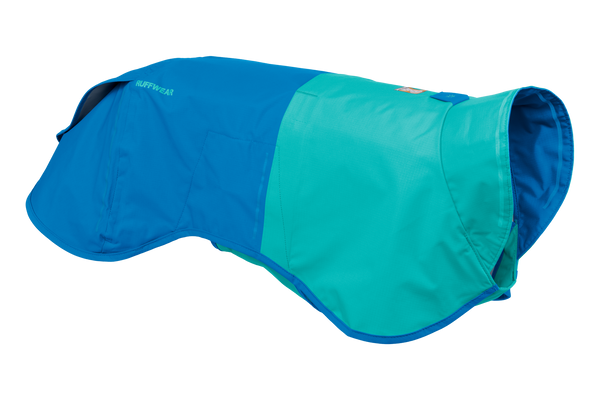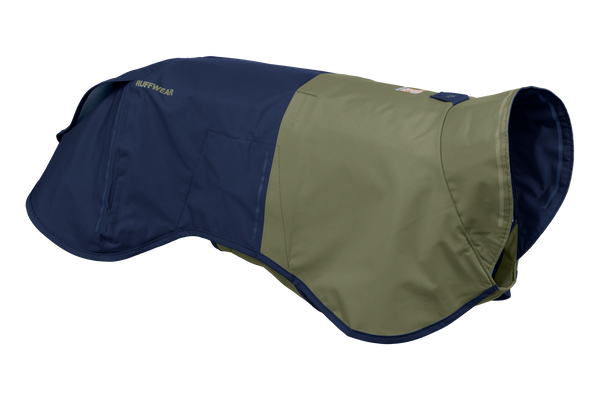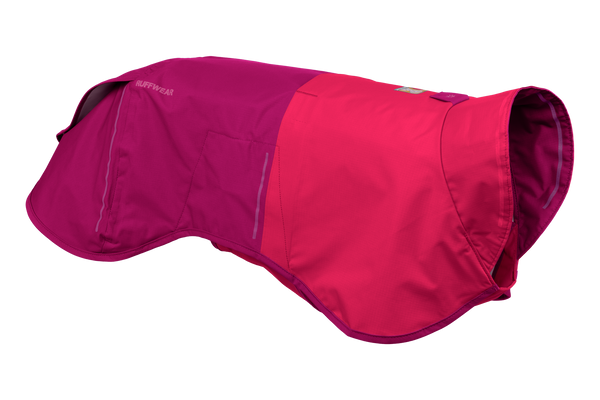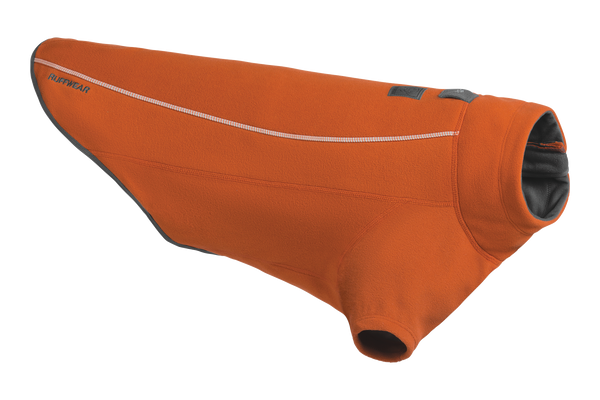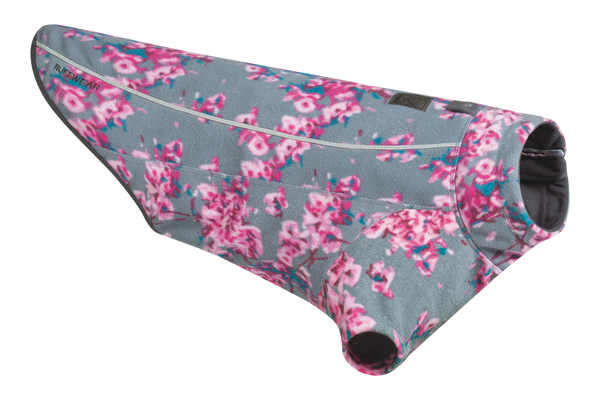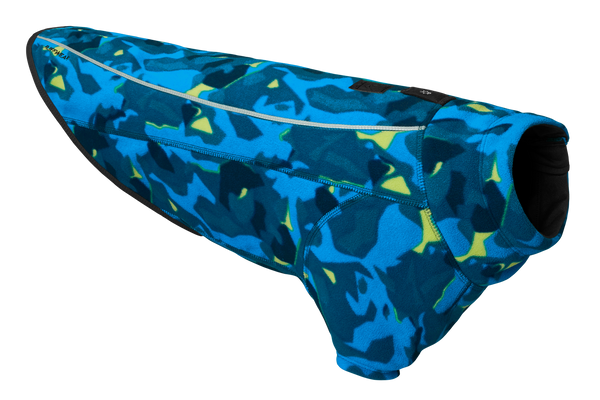Winter Paw Protection: Polar Trex™ Dog Boots
Winter conditions can leave paws vulnerable to the elements and cut your snow day short. So what do you do when the bounding stops and the paw licking starts?
The Polar Trex™ Boots might be the solution that will give you and your dog freedom to keep exploring through the winter months.

Which Winter Conditions Call for Dog Boots?
We caught up with Ruffwear Founder, Patrick Kruse, to talk all things paws and boots. He shares three common paw troubles in winter:
- Snow accumulation between paw pads
- Dry or cracking pads
- Abraded, scraped pads
These can pop up depending on the conditions you’re in. Patrick makes a good analogy:
“When it’s a hard pack with ice crystal – the snow is like coarse sandpaper. If you’ve ever taken a fall while spring skiing and there are ice crystals, you get something akin to road rash.
Maybe your dog doesn’t have any issue in deep snow or the cold, but then springtime brings these abrasive conditions. That’s an opportunity for you to check for abraded or scraped paw pads.”
Consider what type of snow conditions you’re in — packed snow, light powder, or ice crust. Snow with a high moisture content has its own challenges. Its wetness has a sticky quality to it.
Add in other variables – your dog’s fur type, air and snow temperature, humidity, time of year – and you’ve got a host of conditions to navigate.

Do Dog Snow Boots Really Work?
Even Ruffwear’s fearless leader, Patrick, started out as a dog boot skeptic.
He wasn’t sold that dog boots were necessary. He thought to himself, “What self-respecting dog would wear boots?”
Then, he had an experience with his dog that changed his mind forever.
Patrick had been taking his high-energy Australian Cattle Dog, Otis, on a local 17-mile mountain biking loop. Afterwards, Otis would opt to stay off his feet for a few days, and Patrick assumed he’d finally tired out his charged-up pup.
Everything changed when it came time to test some early prototypes of Ruffwear’s first dog boots. They tackled the same route – charging through a creek, river, volcanic rock, and asphalt. But when they returned this time, after only 30 minutes of downtime, Otis was back on his feet – his energetic self.
Turns out, the trails have an impact on paws, and protecting them means quicker recovery time and being ready for the next adventure.
Do All Dogs Need to Wear Boots?
Different dogs can benefit from boots in the winter for different reasons. If you’re wondering whether to boot up on your next winter excursion, consider:
- Will there be ice and abrasive surfaces?
- Will you encounter snowmelt?
- Has your dog experienced snow buildup between their paw pads?
Staying in tune with conditions and your dog are your best indicators. And, having a set of dog snow boots in your pack can be the key to keeping the adventure going if things change.
- Is your dog starting to lift their paws to stay off the snow?
- Are they licking their paws?
- Are they pausing to chew on their feet?
Patrick puts it this way,
“Key into your dog and what they’re doing – like stopping and licking their paws. I usually take boots with me and put them on at the first sign of distress or discomfort.
Sometimes, I know ahead of time that I’ll be trekking into challenging terrain with varying conditions. I’ll think to myself, 'Will boots help keep the group moving forward and prevent a situation where we have to carry a dog out?'
Awareness and learning from experience will help inform you when to boot up. But even the most experienced of us can still run into challenges, and that’s ok. We’ve designed our boots to help you and your dog face whatever comes up on an adventure, so you can keep exploring together.”

How We Designed Our Polar Trex™ Boots
Patrick first began designing dog boots in 1996. A Ruffwear retailer in Colorado had a request: could he make dog boots that actually stayed on?
Over the years and design updates, Patrick and Ruffwear designers learned things while putting these boots through their paces on the trails. Winter conditions presented a new set of challenges – like ice, snow, and moisture – to solve for with the design of the Polar Trex™ Boots.
Many dog boots at the time secured high up onto dogs’ legs. His first thought was, “Why not make them secure around the narrowest part of the dog’s paw?” That’s what he did, and it worked.
On top of that, we chose a strap that used polyester hook-and-loop to secure the boots. It’s hydrophobic (a fancy way of saying it doesn’t absorb water) and is less likely to come undone in wet environments or be encumbered by snow and ice.
And, when you protect that inner hook-and-loop closure with an outer polyester gaiter layer that zips up over it, you have a winter-ready boot that’s more likely to stay on your dog’s paws.

Built for Winter: Polar Trex ™ Boots
The Polar Trex ™ Boot also features a Ruffwear-designed Vibram® IceTrek™ outsole – providing traction on frozen surfaces and a barrier against cold and snow-melt chemicals.
We worked with Vibram® to create a lug pattern (indentation and grooves) and siping (thin-slits) that grips and engages with the snow, much like winter snow tires. To address ice conditions, Vibram® grinds aluminum into flakes and mixes them with a rubber compound to make the IceTrek™ compound. These aluminum flakes in the sole provide added traction in ice and hard pack.
The soles are flexible, so dogs can sense the surface that they are standing on and move naturally.
How to Get Your Dog Used to Wearing Boots
The ultimate key to introducing your dog to boots? Making sure they fit well for ultimate on-trail comfort. That starts with finding the right size.
Ruffwear boots are available in sets of two because dogs often have wider front paws than rear paws. Check our Polar Trex™ product page for sizing recommendations and this video for how to measure your dog’s paws.
Once you have the right size boots, start here before hitting the trail: 6 Tips for Breaking in Ruffwear Dog Boots.
Bark n’ Boot™ Dog Socks are especially helpful for dogs with dew claws and dogs that need a slightly snugger fit. They can also make putting dog boots on easier if your dog has particularly thick fur.
Other ways to protect paws include:
- Keeping toenails trimmed for optimal boot fit & a cleaner surface to prevent snow from sticking
- Keeping your canine’s extra paw fur trimmed
- Musher’s Secret — it's made from natural food grade waxes (the semi-permeable shield forms a barrier between the snow and the paw)
Watch Our Polar Trex™ Video
To learn more about our Polar Trex™ Boots and see a demo on how to fit and adjust them, check out this video:













